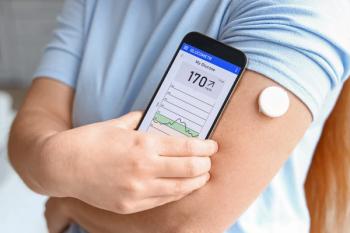
- Drug Topics August 2018
- Volume 162
- Issue 8
Pharmacy Students Aren’t Ready for the Real World
It’s time to fix the disconnect between what students are taught and what’s needed to practice.
Back in 1980 when I was attending pharmacy school at the University of Pittsburgh, I had dinner with Lewis Dittert, PhD, dean, and William E. Woods, who was then the executive vice president of the National Association of Retail Druggists, now known as the
I remember Dr. Dittert sharing a story about a preceptor who was irritated that the student pharmacist couldn’t change the tape in the cash register. Dr. Dittert explained that with all that needed to be taught with respect to pharmacology, pharmaceutics, and patient care, certainly the schools of pharmacy couldn’t be obligated to teach such a task as changing cash register tape. By the end of that dinner I learned the disconnect between practicing pharmacists and academia.
After practicing for 37 years, and precepting 60-plus students from four different institutions, I see that many of these sixth-year students aren’t prepared for practicing in the real world.
One skill set that our students seem to excel in is their ability to “look stuff up.” Unfortunately, this gives them the comfort that all they need to know can be found on their phones or tablets. In the real world, such luxury is not practical.
I tell students, “A physician will never consult you with a question that can be found on your phone. They have phones, too!” We pharmacists need to have a working knowledge of therapeutics, after all that is our area of expertise.
I understand that the education of our pharmacists has indeed shifted since I graduated 37 years ago. I realize students are not sitting in lecture halls with spiral bound notebooks, furiously drawing structures and writing notes from the professor’s chalkboard. However, I feel most students are totally unprepared especially when it comes to self-care (OTC) therapeutics.
This is indeed the area that we pharmacists are expected to excel in. Picture a frantic mother of three who comes to your pharmacy with five prescriptions for the family for Emverm (mebendazole) tablets to treat a pinworm infestation. A single tablet of Emverm costs $450. Certainly, we can’t expect a mom to come up with $2,250, and to repeat the dose in 14 days, as prescribed. We are expected to know the
I get thoroughly frustrated when my students show me over 400 slides covering the ergot alkaloids. A headache specialist in Pittsburgh did a continuing education program 12 years ago and said, “Ergot alkaloids for migraine are hopelessly outdated.” As fun as history might be to teach, or even give background information on, 400 PowerPoint slides on therapeutics that went away over 20 years ago when triptans were introduced is a total waste of time.
This time could be better allocated teaching our students more self-care (OTC) therapeutics, which most seem to be lacking in their clinical year. The two-credit course that most schools have for self-care is not adequate given the plethora of OTC products now available.
I have a great deal of respect for those in academia. The most brilliant minds in the profession of pharmacy are in the hallowed halls of our schools of pharmacy. Unfortunately, most of these brilliant minds don’t spend any time in the community pharmacy practice, where most students eventually end up practicing.
I’d like to see at least one practicing community pharmacist, as well as a hospital pharmacist, on every school of pharmacy’s curriculum committee.
I use the tagline on my business card “where academia and community pharmacy meet.” I blend academia and patient care in my 1200 square foot drug store. As a pharmacist passionate about the education of our students, I’d like to see more interaction between the schools of pharmacy and practicing community and hospital pharmacists.
As our future students head back to school, I wish them success and a most beneficial year crammed full of information that will benefit their patients.
Articles in this issue
over 7 years ago
The 4 Policy Changes Hitting Pharmaciesover 7 years ago
The 5 Challenges Pharmacies Faceover 7 years ago
FDA-Mandated Biosimilar Names Are Confusingover 7 years ago
Opioid Limits, CVS Tackles Drug Prices, and More Pharmacy Newsover 7 years ago
What Bartenders and Pharmacists Have in Commonover 7 years ago
Virtual Staff in Community Pharmaciesover 7 years ago
How Pharmacists Can Tackle the Leading Cause of DeathNewsletter
Pharmacy practice is always changing. Stay ahead of the curve with the Drug Topics newsletter and get the latest drug information, industry trends, and patient care tips.




































































































































